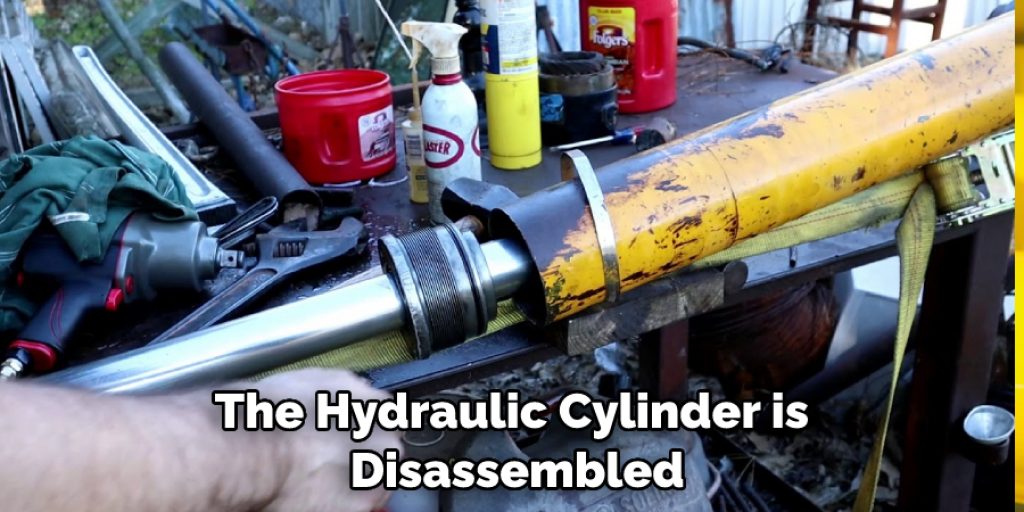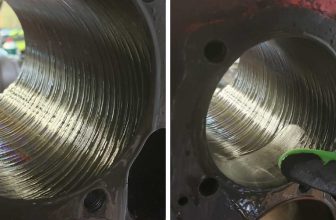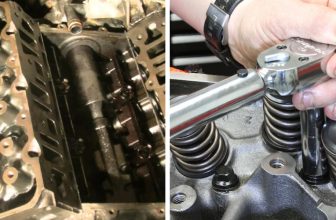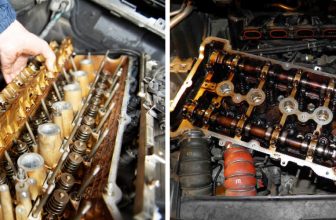How to Repair a Hydraulic Cylinder
A hydraulic cylinder is a machine that uses hydraulic pressure to create linear motion. If your hydraulic cylinder stops working, it can be difficult to know how to repair it. In some cases, you may be able to fix the cylinder yourself. However, in other cases, it may be necessary to take the cylinder to a professional.

This blog post will walk you through the proper steps on how to repair a hydraulic cylinder. We will also provide tips on avoiding common mistakes made during this process. It is important to note that the average person cannot fix all problems, so it is best to consult a professional if you are unsure of what you are doing. Read on for more information.
What is a Hydraulic Cylinder?
A hydraulic cylinder is a mechanical actuator that gives linear force through a linear stroke. Hydraulic cylinders are used in almost every industry and are available in various sizes and types. There are two main types of hydraulic cylinders: single-acting and double-acting.
Single-acting cylinders have only one working chamber, while double-acting cylinders have two. Hydraulic cylinders are used in many applications, such as construction equipment, manufacturing machinery, and automotive engineering.
How Does a Hydraulic Cylinder Work?
A hydraulic cylinder is a mechanical actuator that provides linear force and motion. The cylinder consists of a piston connected to a rod, which in turn is connected to a load. Hydraulic fluid is used to apply pressure to the piston, which creates the force necessary to move the load. Hydraulic cylinders are composed of several parts, including the barrel, piston, rod, end caps, and seals. The barrel is the cylindrical body of the hydraulic cylinder that contains the piston and rod.
The piston is a movable element that transfers the energy from the hydraulic fluid to the rod. The rod is attached to the piston and extends out of the barrel on one end. The other end of the rod is typically threaded so that it can be connected to another part, such as a load or machine component.
End caps are located at each barrel end and seal the hydraulic fluid inside. Seals between the piston and barrel prevent hydraulic fluid from leaking past the piston. If your hydraulic cylinder is leaking, it is likely that the seals are damaged and need to be replaced.

5 Common Reasons That Causes Hydraulic Cylinder to Leak
1. Worn or Damaged Seals:
One of the most common reasons that a hydraulic cylinder will start to leak is that the seals are damaged or worn. Over time, the seals will start to degrade and will no longer be able to seal the piston in the cylinder effectively. If you notice that your hydraulic cylinder is leaking, it is important to check the seals for any damage or wear. Make sure the seals are replaced if they are damaged in any way.
2. Damaged Piston:
Another common reason for a hydraulic cylinder to leak is a damaged piston. If the piston is damaged, it will no longer be able to seal the cylinder effectively and start leaking. In some cases, the damage to the piston may be so severe that it will need to be replaced. If your hydraulic cylinder has a damaged piston, you will need to take it to a professional for repair.

3. Damaged Cylinder Walls:
The cylinder walls can also become damaged and start to leak. If the damage is severe enough, the entire cylinder must be replaced. However, it can be repaired if the damage is not too bad. The first thing you will need to do is remove the damaged portion of the cylinder wall.
This can be done with a chisel and hammer or with a power tool such as a grinder. Once the damaged portion has been removed, you will need to clean the area around the damage. This can be done with a wire brush or sandpaper. Once the area is clean, you will need to apply a sealant to the area.
4. Incorrectly Installed O-rings:
The O-rings on a hydraulic cylinder are responsible for sealing the chamber and keeping fluid in. If they are not installed properly, they will leak, causing the cylinder to fail. If your Hydraulic cylinder is leaking, first check to see if the O-rings are installed correctly. Next, ensure that the O-rings are properly seated in the groove and that there is no damage to them. If they are damaged, replace them with new ones.
5. Improperly Functioning Valves:
The function of a valve is to open and close or allow and prevent the flow of hydraulic fluid. If a valve becomes damaged or isn’t operating correctly, it can cause all sorts of problems with the hydraulic system, including loss of pressure, leaks, and even complete system failure.
You’ll need to disassemble the hydraulic cylinder and inspect the valve for damage to repair a faulty valve. Once you’ve found the problem, you can either replace the damaged parts or repair them if possible.

Step by Step Guide: How to Repair a Hydraulic Cylinder
Step 1: Disassemble the Hydraulic Cylinder.
Start by disassembling the hydraulic cylinder. This will give you a better idea of what needs to be repaired and will make the repair process much easier. If you want to avoid damaging the cylinder, be sure to use a hydraulic cylinder repair kit.
Step 2: Inspect the Parts for Damage.
Once the hydraulic cylinder is disassembled, take a close look at all the parts. Look for any signs of damage, such as cracks, dents, or wear and tear. It will need to be repaired or replaced if you find any damage. Make sure the check the seals and O-rings for any damage as well.
Step 3: Clean all the Parts.
Once you have inspected all the parts, it is time to clean them. This is important because you want to ensure that no dirt or debris can cause problems when you reassemble the hydraulic cylinder. Use a clean rag and some hydraulic fluid to clean all the parts. Make sure the O-rings and seals are replaced if they are damaged.
Step 4: Use Wire Ring or Threaded Head.
To reassemble the hydraulic cylinder, you must use either a wire ring or threaded head. This will allow you to screw the parts back together. Ensure you do not overtighten the parts, as this can damage the seals. If you want to use a wire ring, you must first place it over the piston rod. You can then screw on the end cap, using your fingers to turn it.
Ensure the wire ring is in the correct position, so it does not damage the seals. If you are using a threaded head, you must first place the O-ring onto the piston rod. You can then screw on the end cap, using your fingers to turn it. Again, ensure the O-ring is in the correct position so it does not damage the seals.
Step 5: Screw on the End Cap.
Once you have placed the wire ring or O-ring into position, you can screw on the end cap. Be sure to use the appropriate size wrench or socket, as using too large of a tool can strip the threads. Also, be careful not to overtighten the end cap, as this can damage the seal.
Step 6: Test for Leaks
Now that you have repaired your hydraulic cylinder, it is time to test for leaks. The best way to do this is to use a pressure gauge. If you don’t have a pressure gauge, you can use a piece of string or fishing line. Attach the string or fishing line to the end of the hydraulic cylinder where the piston is located. Ensure the string or fishing line is long enough to reach the ground.
Turn on the hydraulic pump and allow the pressure to build up. The string or fishing line will remain straight if there are no leaks. If there is a leak, you will see the string or fishing line sag as the pressure escapes from the cylinder. Ensure the end cap is tight if you see the string or fishing line sag.

Safety Precautions and Advice:
- Before beginning any repairs, it is important to take all necessary safety precautions. This includes wearing protective gloves, eyewear, and clothing.
- If the hydraulic cylinder is still under pressure, it is extremely dangerous to attempt repairs. Therefore, all pressure must be relieved before starting any work.
- Be aware of the location of all nearby moving parts and any potential sources of heat or sparks.
- Never use a blow torch or other open flame near hydraulic fluid. This could cause the fluid to ignite, leading to serious injury or even death.
- Be sure to have plenty of ventilation when working with hydraulic fluids and other chemicals.
- Never smoke while working on hydraulic repairs.
You Can Check It Out To Rebuild Hydraulic Cylinders
Final Words
If you have a hydraulic cylinder that isn’t working, it is important to find the source of the problem and repair it as soon as possible. There are several potential causes of hydraulic cylinder failure, but some are more common than others. In this post, we’ve walked you through the most common problems and how to repair them.
We’ve also provided tips for preventing these problems from happening in the first place. Thanks for reading our blog post on how to repair a hydraulic cylinder. We hope you found it helpful. If you have any questions, please don’t hesitate to contact us.




